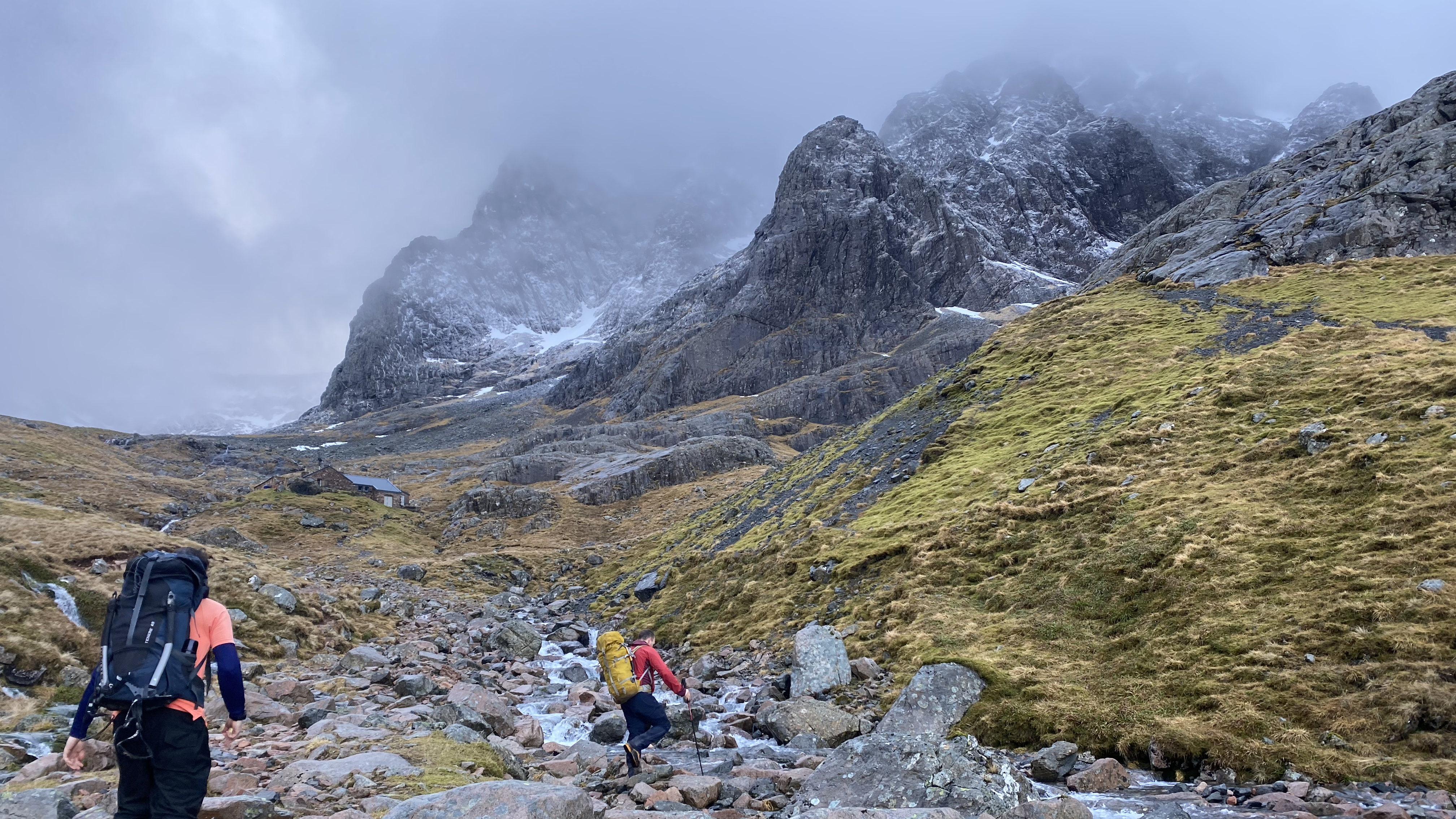
Many of the world's finest and most iconic mountains have a spectacular north face. Think Half Dome, the Eiger, the Matterhorn. Britain's highest mountain is Ben Nevis and it too has a rather delightful north face. It's a mecca for rock climbing, while in winter it attracts alpinists and ice climbers from across the world to test their skills in its unique arena.
Unsurprisingly, "the Ben" is a highly desirable bucket list item for hikers, drawing peak baggers from far and wide, but is Ben Nevis hard to climb? Lots of you have asked this question, so we went to the Scottish Highlands to get you some answers, and provide you with some expert information on what to expect and how to prepare for hiking Ben Nevis.
Is Ben Nevis hard to climb?
Ben Nevis is a physical challenge regardless of the route taken to the summit, as the base of the mountain is pretty much at sea level. This means you'll need to ascend the full 1,345 meters to reach the top. Then there's the Scottish weather to contend with, which can be unpredictable.
The Pony Track is the easiest way up the mountain and presents no technical difficulties. In other words, it's a straightforward hike during the warmer months. However, the summit can be a dangerous place when visibility is low, due to the sudden drops down into the North Face's gullies. Snow can also persist in its higher reaches into the summer, which can add additional challenges.
Another route hikers might consider is the CMD Arête, a classic grade one scramble on a narrow ridge that connects the summit to the neighboring peak of Cárn Mór Dearg. A bolder scramble that ascends the North Face is Ledge Route, which is one of experienced scramblers.
In winter, the Ben is a challenging mountaineering objective by any route and there are a wealth of options, with everything from a winter walk on the Pony Track to some of the most difficult ice climbs in the world. Perhaps the most famous mountaineering route on Ben Nevis is Tower Ridge, a Scottish Winter Grade IV climb of one of the North Face's most prominent features.
Meet the experts
Today's best deals
Where is Ben Nevis?
- Ben Nevis is in the Lochaber region of the West Highlands of Scotland
- It's thought to either translate to "mountain with its head in the clouds" or "venomous mountain"
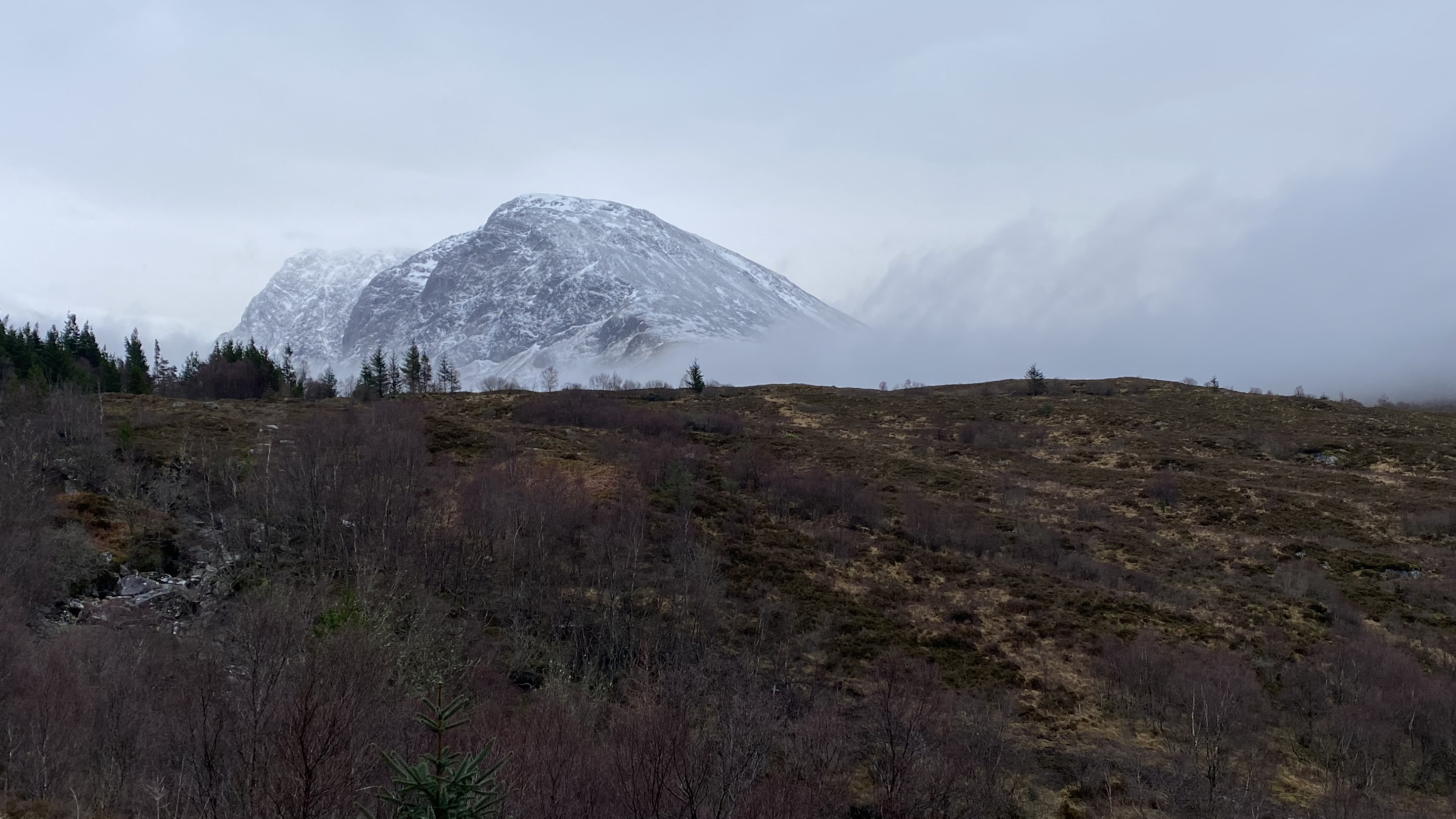
Ben Nevis is a Munro in the Scottish Highlands area of Lochaber near the town of Fort William, towering at 1,345m (4,412ft) above sea level.
The name Ben Nevis is a Gaelic word that is variously translated as “mountain with its head in the clouds” owing to its frequently mist-shrouded summit, or “venomous mountain,” which is probably the translation the disgruntled author of a now viral Tripadvisor review would have chosen after hiking it back in 2014.
“The climb basically went on for far too long and the last part was particularly steep and difficult. It was also cloudy at the top so the view was non-existent. The long walk back down was boring and again took too long,” wrote the aggrieved hiker, who was further appalled by the lack of facilities at the top and concluded with a warning: “This attraction is free, but I honestly couldn’t imagine anyone – and I mean anyone – paying to climb this.”
So according to him, it’s difficult indeed, but as avid hikers and climbers ourselves at Advnture, the description of a long, steep hike with no toilets at the top sounds like our idea of heaven, so is difficulty in the eye of the beholder? We sat down with alpinist and mountain guide Mike Pescod of Abacus Mountain Guides who provides skills training and mountain guiding in Scotland and the Alps to get the insider’s view on how difficult it really is to climb Ben Nevis.
Is there a path up Ben Nevis?
- The most used and easiest trail is the Mountain Path (Pony Track)
- There are scrambling routes on the CMD Arête and Ledge Route
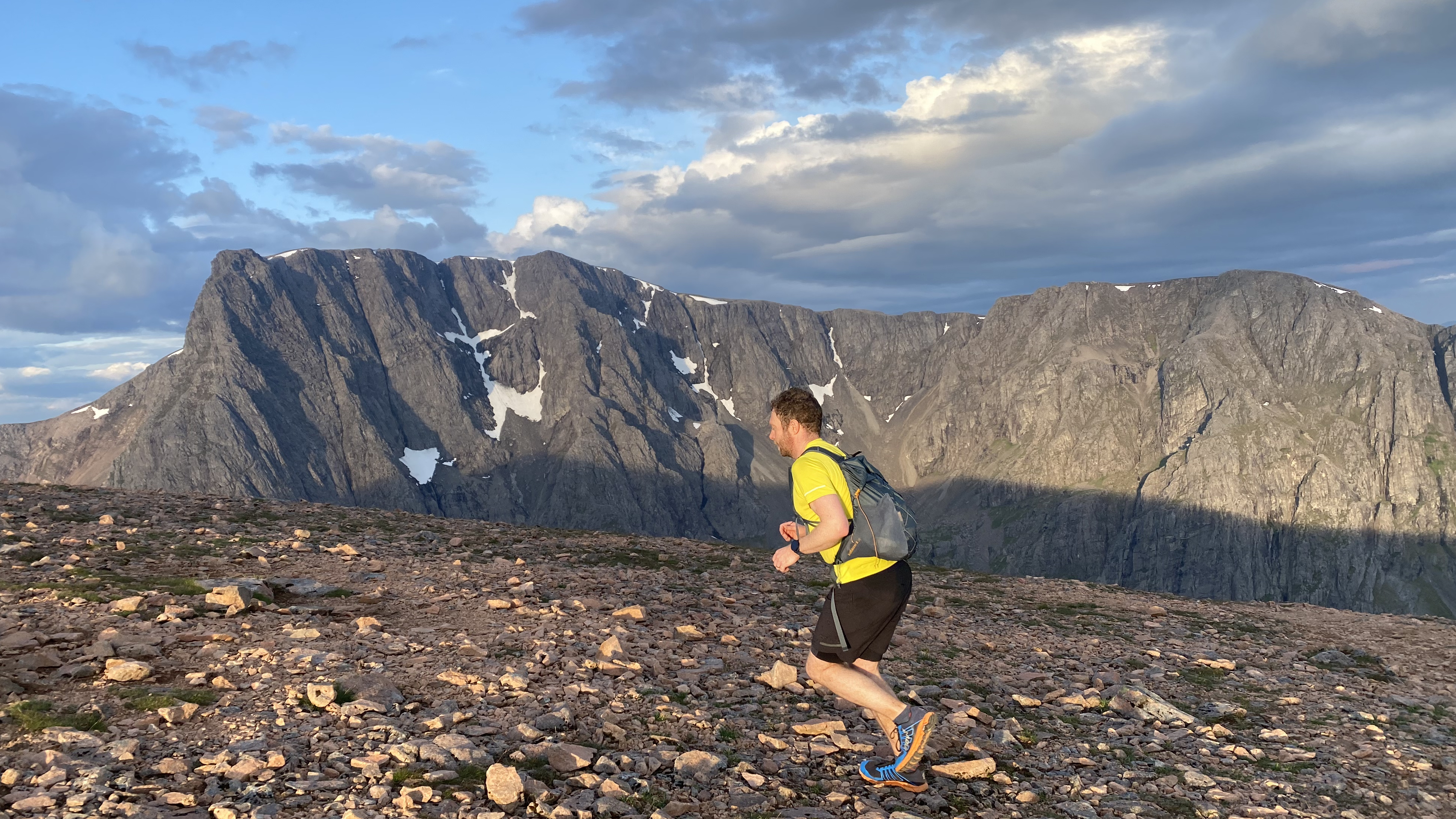
The most common approach for going up Ben Nevis is by the Mountain Path (also known as the Pony Track), which is a 10.5m/17km out and back trail. In good conditions, this is the most straightforward way up the mountain, according to Pescod.
“When there is no snow, the path is really easy to find and there's usually people on it. But when there’s snow on the ground, which can be any time from November to May, the path is covered in snow and it’s impossible to follow the trail itself so you need to navigate,” says Pescod.
“There are problems with getting it wrong because there's a big north face that drops down 500 metres and on the other side there’s an equally long slope that goes down to Glen Nevis. The path going up is a corridor of relatively flat ground, which if you stay on it is great, but it is quite easy to stray off that.”
Other routes such as the Ledge Route and Cárn Mór Dearg Arête, involve scrambling and a challenging ridge climb and are only for very experienced scramblers. Approach shoes are the ideal footwear for tackling the rocky terrain found on these routes.
What grade is Ben Nevis?
- The Mountain Path mostly consists of Grade 1 hiking, making it straightforward in kind conditions
- However, it's still a strenuous hike
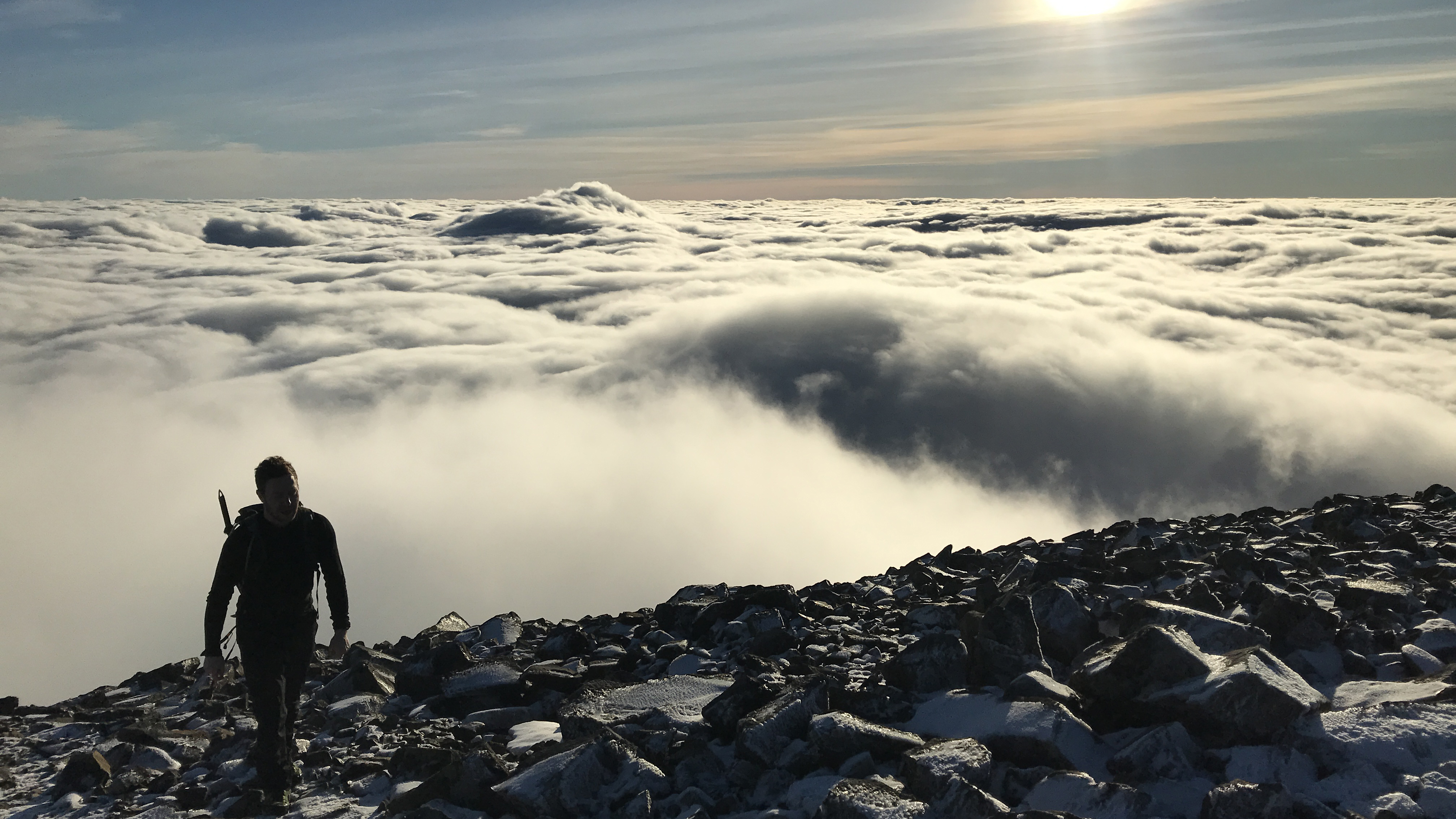
Based on the hiking trail rating system, the Mountain Path mostly consists of Class 1 hiking, which means that without snow, it will deliver straightforward hiking, usually on a well-maintained and well-marked trail. You will gain elevation, but you won’t require technical equipment to do it. However, don’t be lulled into a false sense of security here – even via the Mountain Path, Ben Nevis is steep and strenuous the entire way, and becomes rough towards the top as you hike through boulders and scree, with areas that are Class 2. You’ll want proper hiking boots and trekking poles to attempt this hike.
Can a beginner climb Ben Nevis?
- Beginners do ascend Ben Nevis but it's worth getting experience under your belt first
- Make sure you're properly equipped with waterproofs, warm layers and quality hiking footwear
- Consider hiring a guide if you are in doubt
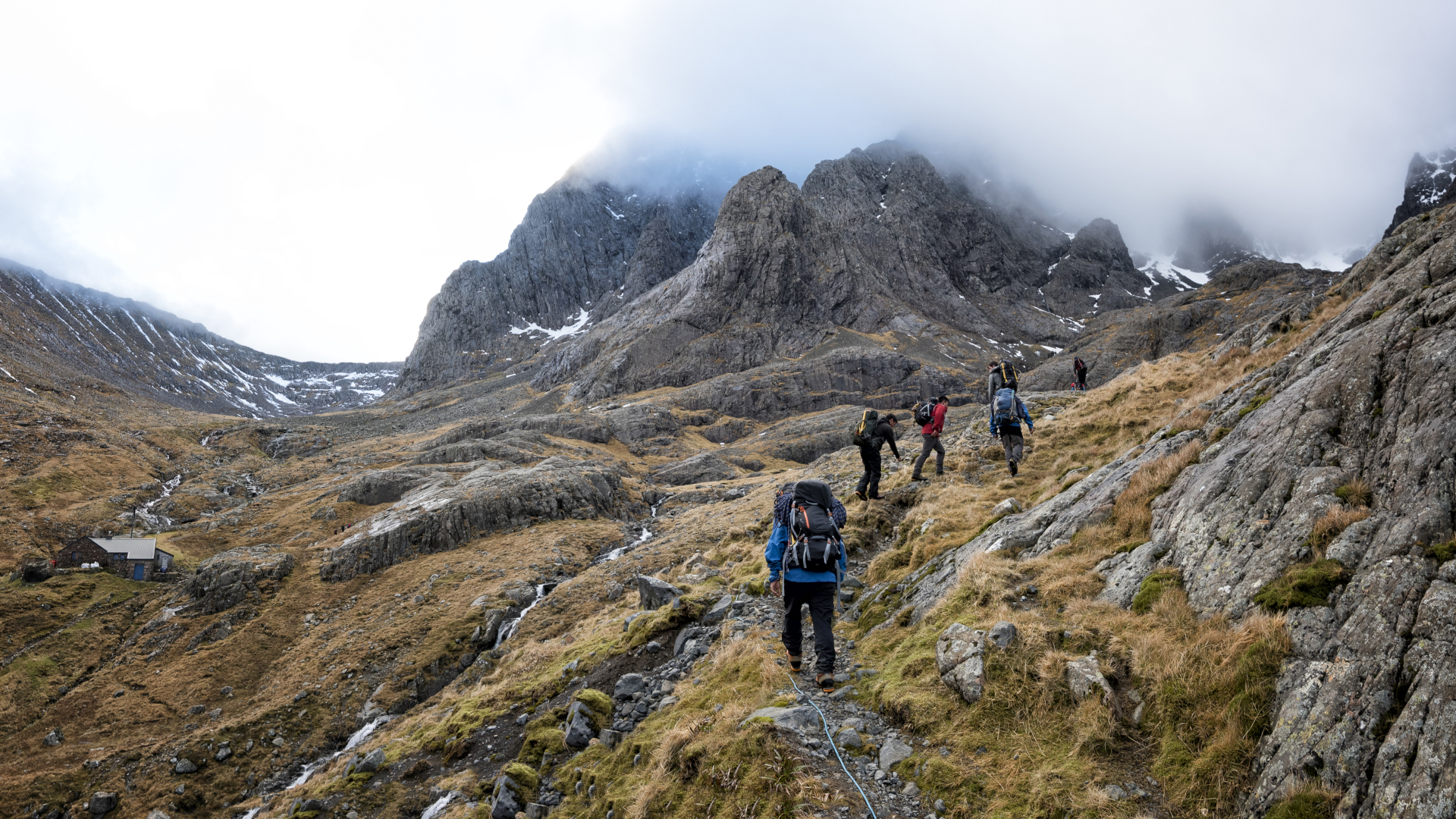
Lots of beginners do climb Ben Nevis, but whether or not it’s a good idea to do so is a different question altogether, particularly in winter conditions. Glasgow-based artist and hillwalker Jim Ramsay drove up to Ben Nevis to hike it with a friend. The pair camped at the base of the mountain the night before in order to get an early start and Ramsay recalls a sleepless night kept awake by the sound of circling helicopters overhead looking for a lost hiker who, it turned out, had tragically fallen to his death.
“When we went up Ben Nevis the next morning, it was like the photos you see of Hillary’s Step on Everest. Just a long line of people, mostly in t-shirts and trainers, mostly having never done a hill before in their life, really badly equipped but very happy to be there, and some people absolutely over awed by the size of it.”
If you are new to hiking and find yourself in the area, it’s far more advisable to hike on one of the dozens of other nearby mountains and walking paths that make Lochaber the self-styled Outdoor Capital of the UK. If you do have your heart set on Ben Nevis, you should strongly consider going with a guide such as Pescod, and making sure you’re in good shape to begin with.
How fit do you need to be to climb Ben Nevis?
- Ben Nevis is equivalent to climbing the Empire State Building up and down four times
- You need to be a relatively good shape to attempt it
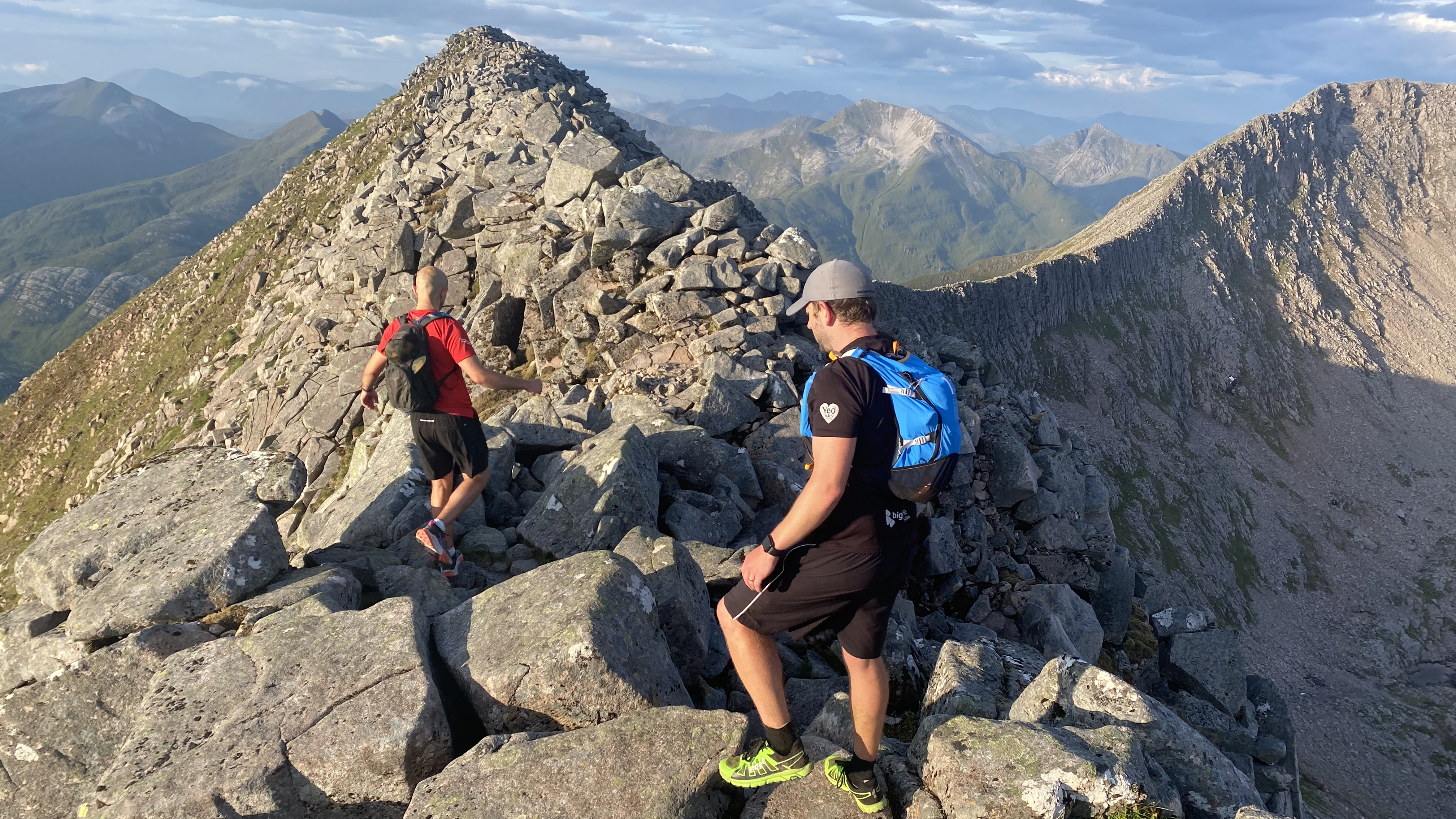
You need to be relatively fit to hike Ben Nevis. One way to illustrate the challenge involved would be to compare it to climbing stairs. Climbing Ben Nevis is the equivalent of climbing about 6,725 steps, or nearly 700 flights of stairs. For comparison, that’s like climbing to the top of the Eiffel Tower or the Empire State Building four times, except that there’s no elevator to take you back down at the end.
“Don’t underestimate the size of it. Do a bit of training beforehand, warns Pescod, who recommends you do anywhere from 12 to 20 weeks of training to prepare if you’re unused to hiking.
Is there a cafe at the top of Ben Nevis?
- There is no cafe on Ben Nevis
- Bring your hiking flask for a coffee on the summit
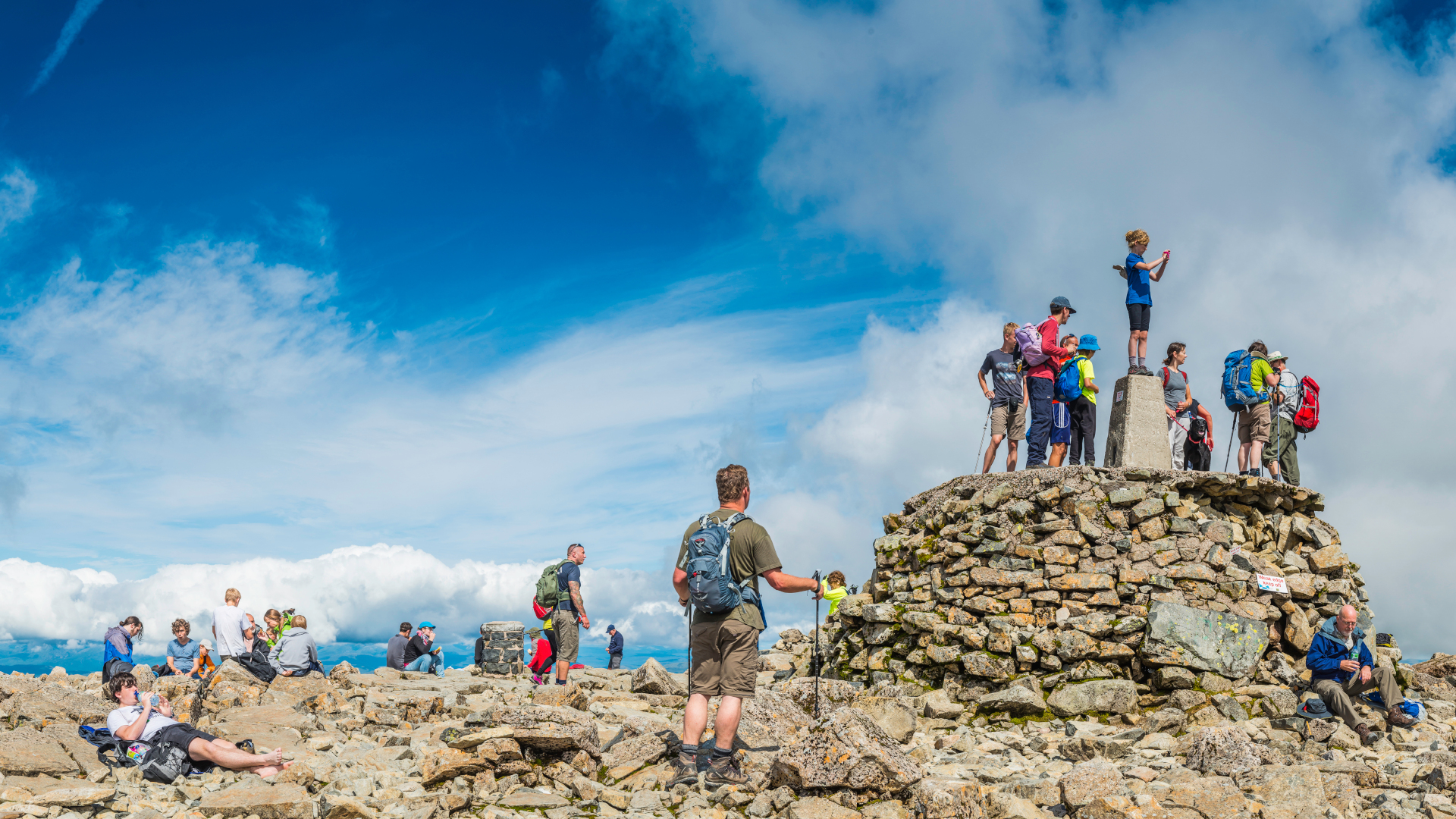
There seems to be a circulating myth about a cafe atop Ben Nevis, and certainly our friend on Tripadvisor was expecting something more than the cairn that marks the highest point and the derelict observatory built in 1883 where you can huddle from the rain and wind. But to be clear, there is not a cafe on top of Ben Nevis.
“Remember, it’s not a tourist attraction. There isn't a cafe at the top. It’s not something that we built. Take it seriously and you’ll actually enjoy it a whole lot better,” advises Pescod. So, if you like a nice cup of tea on a mountain top, bring a good flask.
Is Snowdon harder than Ben Nevis?
- The easiest route up Ben Nevis is harder than the easier routes up Snowdon
- There's also a cafe at the top of Snowdon
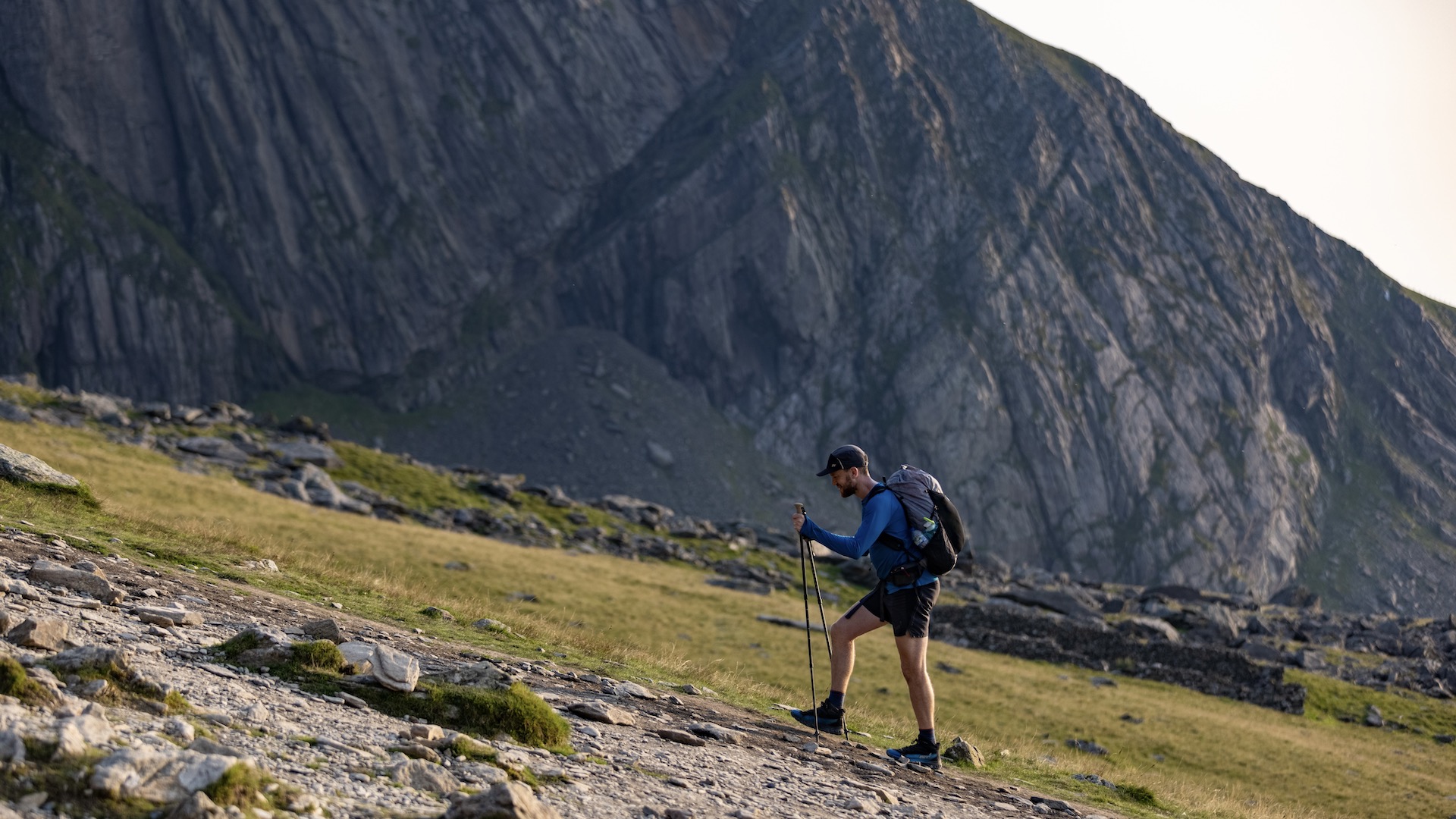
As a veteran of both mountains, I can safely say that Ben Nevis' Pony Track is harder than the easier routes on Snowdon.
Alex Foxfield, Mountain Leader
All things being subjective, the easiest route on Ben Nevis is arguably harder than the easiest route on Snowdon (Yr Wyddfa), which is the highest mountain in Wales. To get to the top of Snowdon requires an elevation gain of 975m at most, where you’ll still be almost 400m lower than you’ll be at the summit of Ben Nevis. Plus, the hike up Snowdon is not quite as long and, in this case, there is a cafe on top of Snowdon where you can warm up with a cup of coffee. In fact, on Snowdon, you can even take a train up!
Is Ben Nevis hard to climb? The expert details
- Ben Nevis is a strenuous hike, however you do it
- Scotland's weather can be unpredictable and ferocious
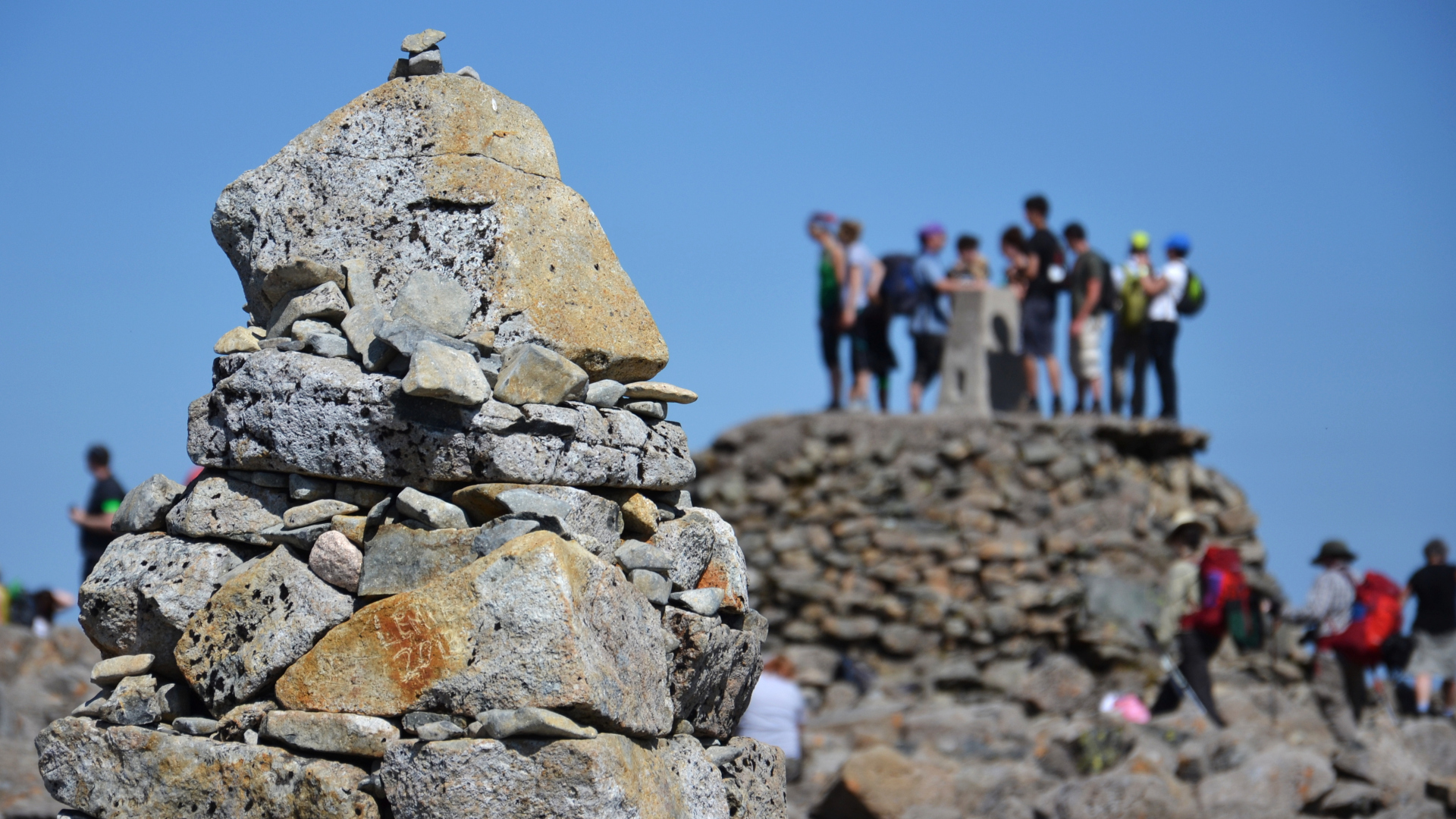
As Pescod points out, 150,000 people climb Ben Nevis each year, the majority of whom are unguided and make it off the mountain unscathed. This doesn’t, however, mean they have an easy time of it and he points to four primary factors that make climbing Ben Nevis challenging, even for experienced hikers. First, there’s the question of scale. Ben Nevis is a big mountain.
“It takes a long time to walk up Ben Nevis. If you walk up Scafell Pike or Snowdon in five to six hours, it will take you eight or nine hours to walk up and down Ben Nevis. Most people that go up to Ben Nevis are really used to walking, but find that coming down is really hard work on their leg muscles, knees and joints. In the rescue team, a lot of our rescues in the summer are people that have just got tired legs or twisted knees and ankles and have underestimated the impact on their legs coming down.”
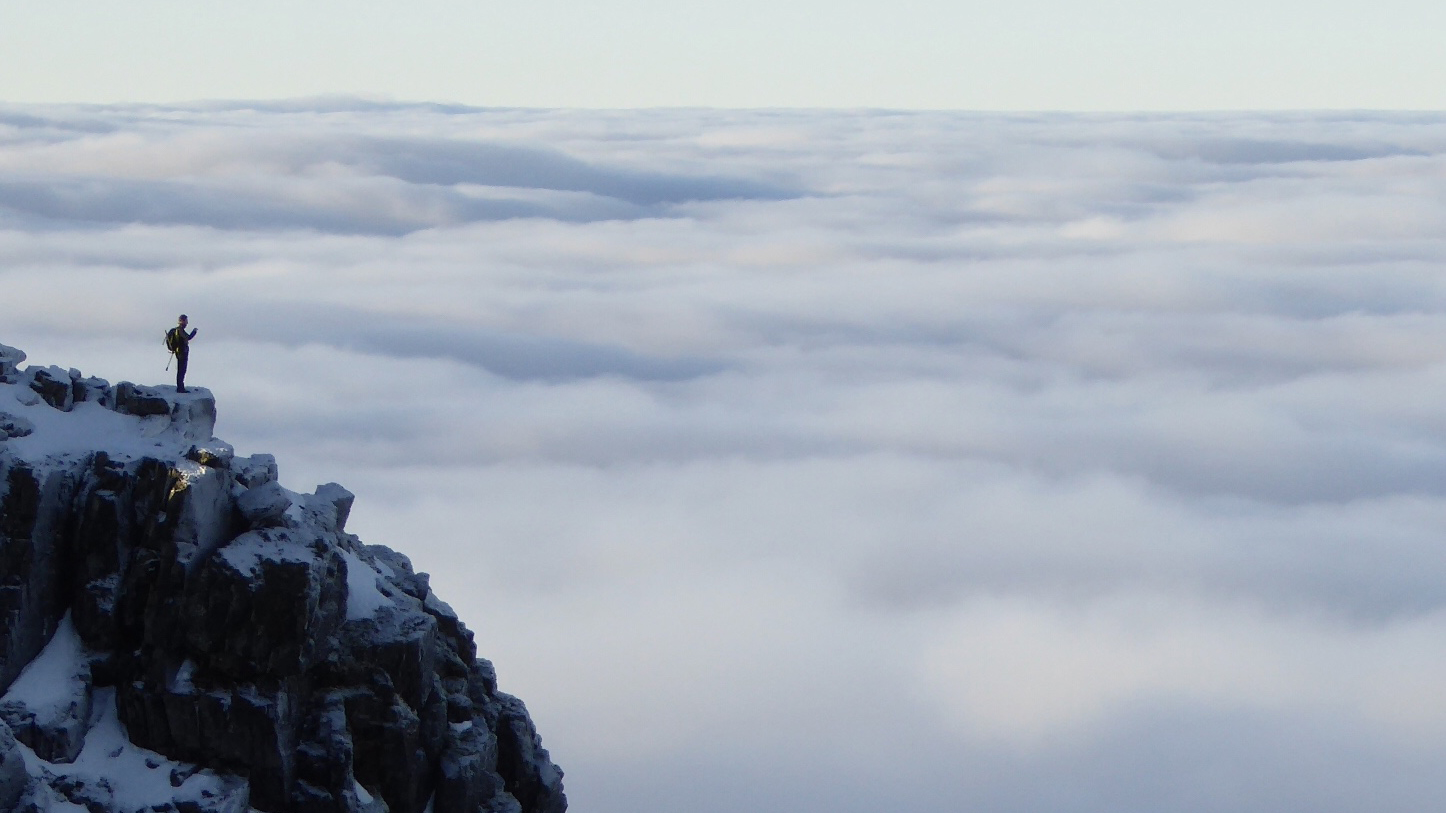
Next up, there’s the question of weather. If you don’t know, Scottish weather is not known for being particularly hospitable, with Ben Nevis averaging 160" of rain each year and Pescod advises bringing the best possible waterproof jackets and waterproof trousers.
“There's waterproofs and then there’s waterproofs in Scotland. Walking up Ben Nevis for eight hours in the rain, it’s really hard to keep yourself dry. Bring very good waterproofs, not softshells.”
He also recommends bringing more warm clothing than you think you need, such as extra base layers, fleece jackets and dry hiking socks (take a look at our guide to the best hiking socks for some good options). Further, Pescod advises bringing a group shelter, which you can hire for the day and huddle inside when you stop for a break.
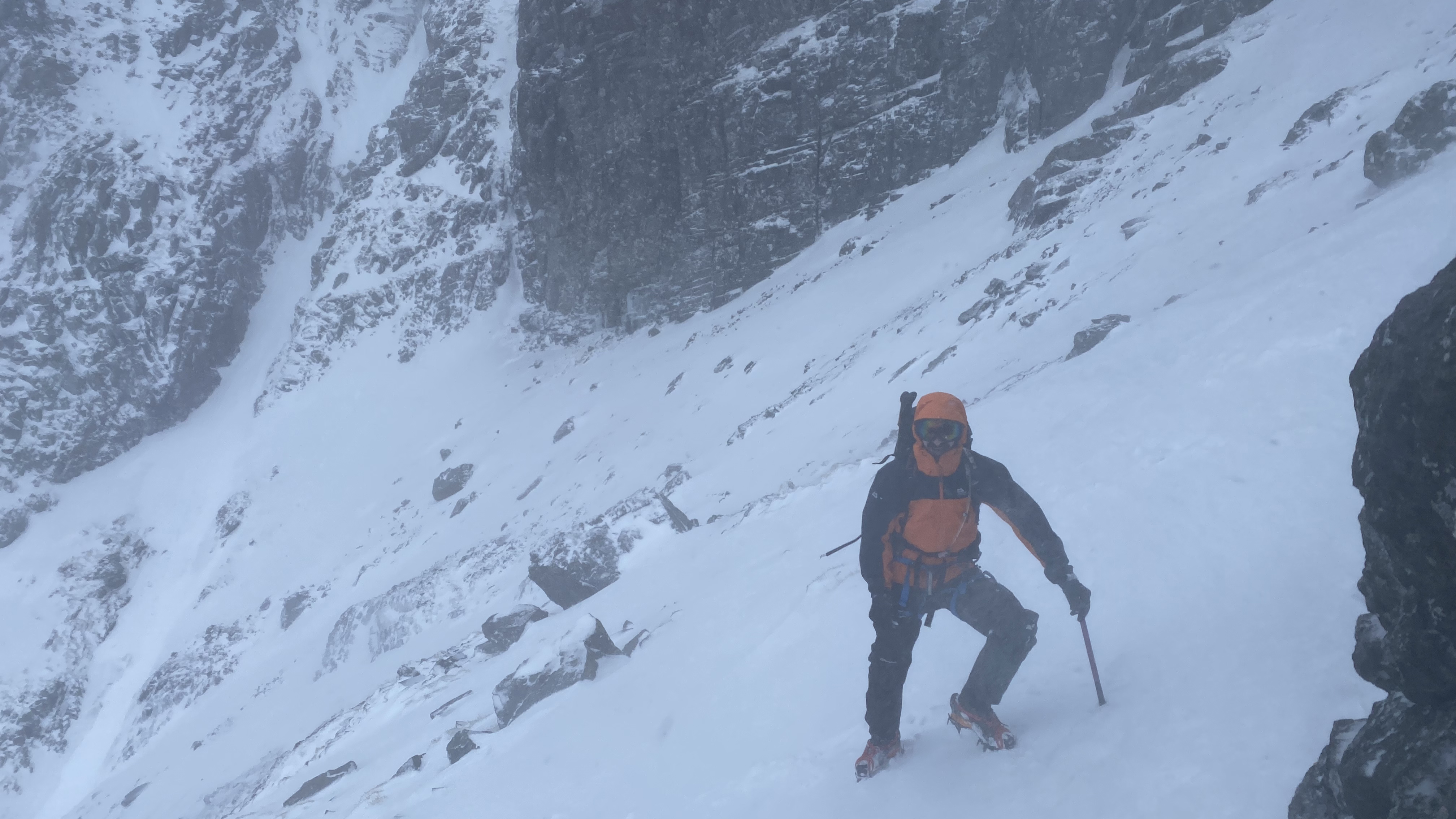
Then there’s the question of snow conditions. As we’ve already explained, there is often snow on Ben Nevis that obscures the path, making it essential that you know how to navigate.
“Navigating isn’t just carrying a map and compass, you actually have to know how to use those things,” explains Pescod, adding, “Track your way up the way and down the way. Navigation is working out where you’re going as you’re going, not walking for two hours, getting lost, and then trying to work out where you are. That’s relocation. Navigation is the proactive bit you do before that to work out where you should be going.”
If you are heading up there in the snow, hiking boots alone won’t do. You’ll want winter gear such as winter hiking boots, crampons and an ice axe, and again, you’ll want to know how to use those items.
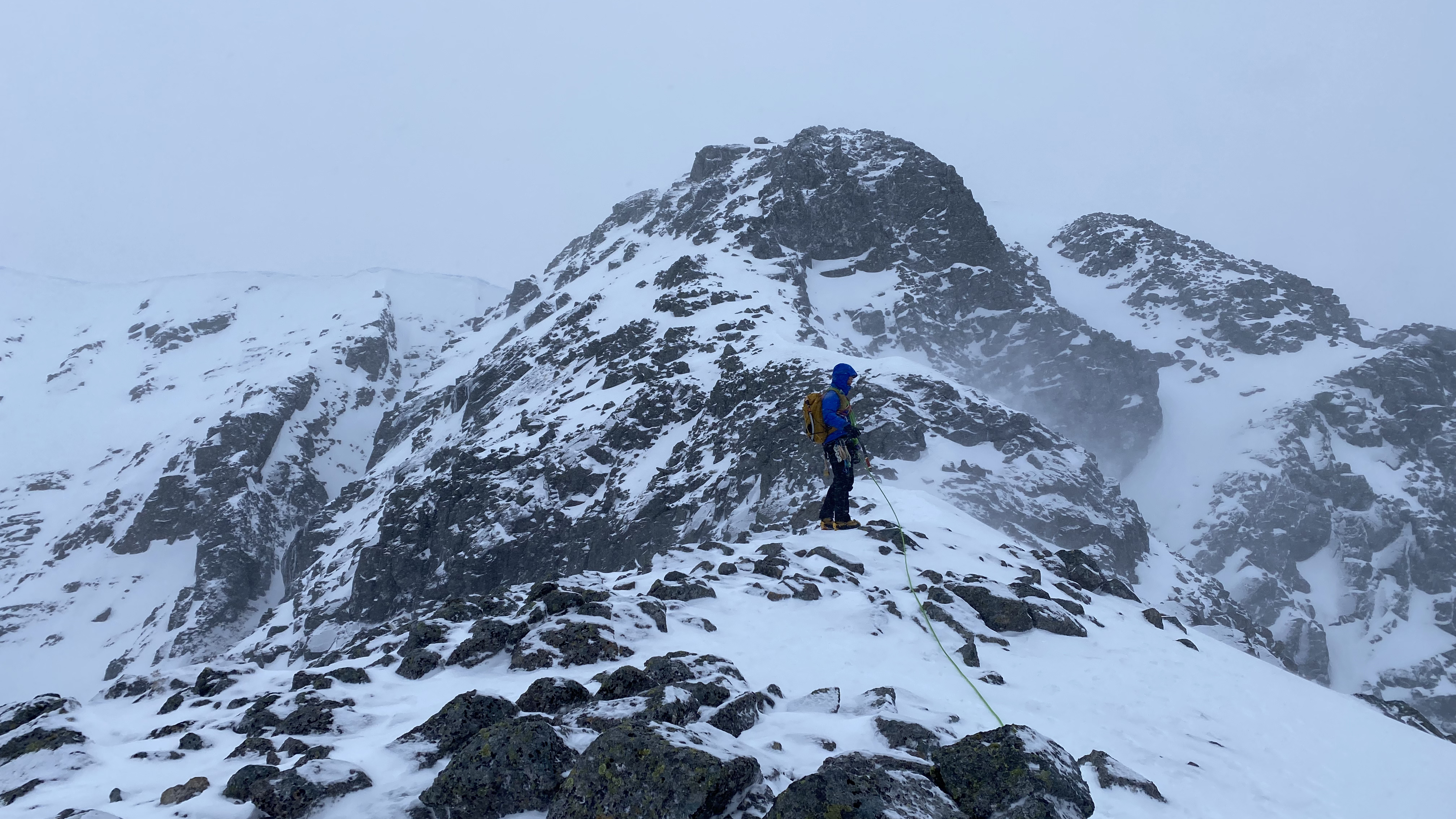
Finally, Pescod reminds aspiring Ben Nevis summiteers that if you do get into trouble on the mountain, while mountain rescue is more than happy to come to your aid, calling for help isn’t like calling for an Uber.
“Most people get off absolutely fine, but if something does go wrong, know that if you’re near the top of Ben Nevis or one of our other Munros, it’s going to take three to four hours for the rescue team to get to you.”
To illustrate the point, he suggests that you think about how cold you are after 20 minutes of sitting at the top of a Scottish mountain having lunch, then imagine doing that for a further four hours.
Ultimately, Pescod concludes, you can fulfil your dream of climbing Ben Nevis as long as you’re prepared to do a bit of research and a bit of preparation.
“It’s not that hard. It’s pretty simple – if you know what to do.”







